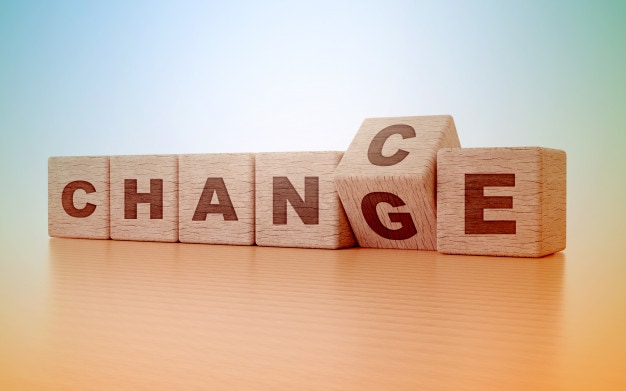Planned change is defined as the process of preparing the entire organization or at least a significant part of it for new goals or new direction. The direction can be culture, internal structures, metrics and records, processes, or any other relevant and related aspect.
Table of Contents
Explanation
Change is constant, and the best companies embrace change. Not every change can be planned. Sometimes organizations face certain situations in which they have to adapt to the change instantly.
It is important to note that planning for change and planning for innovation are not the same things. Innovation is a transformative process that requires a significant change.
Theories of planned change
There are three significant organizational change or planned change theories used to help the organizational members manage the change.
1. Lewin’s change model
Lewin’s model is the basis for comprehending organizational change. It was developed by Kurth Lewin and had three steps in it.
Lewin’s change model suggests increasing the factors which push for change in the organization and reduce the forces or factors which promote to maintain the existing state in the organization. This produces reduced tension and also less resistance to change.
There are three primary steps in this model which are as follows:
1. Unfreezing
As the name suggests, this step involves the reduction of the factors which maintain the existing organizational behavior at the current level. This is why it is named as unfreezing because the existing state is unfrozen here.
Unfreezing is sometimes accomplished by the causes of psychological disconfirmation.
2. Moving
In moving, there is the displacement of existing organizational behavior, Individual or department, to a different level.
It also involves interfering in the present system to develop new attitudes and values and relevant change in the organization.
3. Refreezing
In this step, the stabilization of the organizational equilibrium occurs. Supporting mechanisms and procedures are used to achieve refreezing, which forces the new organizational state.
These are the forces that gradually become the regular forces, and the cycle continues.
2. Action Research Model
Planned change is a cycle, and the action research model focuses on the planned change as the cycle. The primary research about the organization gives information to guide further action. The results are assessed to provide information to guide further action.
Action research has the objective of assisting companies with implementing their planned change. Also, it is aimed at developing general knowledge gathered from implementing the planned change so that it can be applied to other companies as well.
The action research was developed to have a two focus on changing and knowledge generation; it has been changed and adopted to efforts in which the primary emphasis is on the planned change.
3. Contemporary approaches to change
The contemporary approaches to change are adopted from an action research model. Although there is the difference that the member involvement is relatively high in the change process.
This consists of learning for the members of the organization about their company and how they should change it to apply the planned change.
Steps in planned change
Once an organization is committed to planned change, it should create a logical and stepwise approach to reach those objectives.
1. Identification of the need
The need for recognition happens at a higher level of the organization, which involves senior management. They are the ones who recognize that there is a need to change.
The change may be necessitated due to external or internal forces, and the senior management determines it.
2. Develop goals of change
Goals that change are necessary to be defined before the starting of the planned change. Evaluation of both threats as well as opportunities should be done, and the required changes in specific terms should be determined like the changes required for the product, culture, etc.
Specific goals should be designed for them.
3. Change agent
The change agent, as the name suggests, is the one who drives change in the organization. He may be internal or external. The change agent should realize the things which need a change, be it a product, culture, or other things in the organization.
He is expected to be open to suggestions and ideas and also should support the execution of the suggestions into daily practice.
4. Analysis of the current situation
In this step, an analysis of the existing situation is performed. The change agent, which is selected, gathers data about the organization’s current situation. This data gathering has only one intention, which is to help the existing employees prepare.
To push the employees to adopt the change, the negative feedback of the existing situation must be imparted on them. This will motivate them to shun the existing situation and go to adopt the new change, which is planned.
5. Select the implementation method
Now that the current method is analyzed and evaluated, different possible methods of implementation would be presented. Once all the queries are solved, the chosen plan is selected for the implementation.
Managers ensure that they are self-motivated towards the change. They visit organizations that have implemented new ideas, talk to people who have different views and ideas, and do everything needed to stay motivated for the change since they are the ones who will drive the change in their respective teams.
6. Developing a plan
As the name suggests, in this step, planning takes place. Specifics of the plan such as what, where, and how is determined in this step, and the plan is expected to act like a GPS map providing direction for the organization.
If there are any events or activities which would drive the change, then such events should be timed to integrate the change process. Department-wise or person-wise responsibility is delegated to accomplish their respective objectives.
7. Implementation of the selected plan
There could be multiple plans in the process, some of which may be rejected and is one of which will be selected. After all the queries are answered, the plan is put into effect. Everyday problems faced by employees during the implementation of change can dilute the excitement of the change.
It is the responsibility of the managers to maintain the excitement for the change by providing the required resources to their employees.
They can also ask employees to develop new skills, and reiterate the change by having a strong support system for those employees who drive the change in their teams or themselves.
8. Follow-up and evaluation
The goals which were defined before the initiation of the change process are compared to the results which are obtained and changes if any, are done in the implementation process to obtain the desired results.
If necessary, a follow up should be done to determine the completion since a positive result is expected by implementing the planned change.
Effects on Different stages of change
Organizations require change leaders to drive the change, and they may hire both external and internal change leaders for their expertise and specialization. Both of them have unique abilities and influence on the change process.
Following are the effects on different change stages:
1. The entering stage
The internal change leaders are at an advantage in the entering stage since they have access to the clients. This means they do not have to spend time building relations with the existing clients.
They also understand the organizational goals and the problems associated and have direct access to direct information of the company, which saves their time further.
This helps them to function smoothly by increasing efficiency. On the other hand, external change leaders will need to spend more time obtaining information and data about the company, which delays their work as compared to internal change leaders.
2. The contracting stage
Internal change leaders will have fewer things to worry about since they are already in the organization. Things like internal contracts and ample expenses will remove their concern on such things.
On the other hand, external changes leaders do not get it so easy. They will have a formal contract and can decide whether their specialties and skills match the organizational goals agreeing to the assignment.
3. The diagnosis stage
In this third stage, internal change leaders already have a basic level of trust with most people in the organization, but external change leaders will have to spend more time building rapport.
On the other hand, external changes leaders have high status as compared to their internal counterparts. This helps them investigate more pressing issues and provide their assessment more objectively to the company seniors.
4. The intervention stage
To ensure success, both internal, as well as external change leaders, should depend on valid information to make decisions. In this stage, compared to the external change leader, the internal counterpart will be more cautious because of having more robust bonds with the company.
A person in higher authority or power will be able to influence the decisions made. Still, the same person will not have a similar authority over the external change leader since he is not related to the organization.
5. The evaluation stage
The internal change leader is present for the change as it is implemented in the organization. This will allow the internal leaders to make minor modifications as the change progresses.
On the other hand, external change leaders are not present to see long-term results. This is because they are not available in the organization and are not internal employees to look out for the long-term results.
Conclusion
Planned change is necessary for every organization, and the implementation of it has to be done methodically. The number of steps in planned change may vary depending on the organization and the type of industry, but organizations must be prepared for the change.
Did you know that effective planned change can significantly improve organizational outcomes?
Studies indicate that organizations with strong change management practices are six times more likely to meet or exceed their objectives compared to those that neglect a structured approach (source: Prosci’s Best Practices in Change Management, 2021). This underscores the critical role of planned change in driving success.
As management expert Peter Drucker famously said, “The greatest danger in times of turbulence is not the turbulence—it is to act with yesterday’s logic.” By embracing planned change, organizations position themselves to adapt and thrive in an ever-evolving business landscape.
Liked this post? Check out the complete series on Management

